Teaching classroom routines and procedures is one of the most important things you can do at the beginning of the school year. Establishing routines will keep your classroom running smoothly and make you a very happy teacher. Read on to learn how to teach routines and procedures to make your classroom run smoothly.
In the past, I’ve heard teachers say they didn’t have time to teach the routines and procedures because they needed to start teaching the standards/curriculum. My argument is that you’ll be able to spend much more time teaching later on if you invest this time at the beginning of the year. If not, you’ll spend most of your time reminding students how to behave and what your expectations are.
You might be wondering what makes me qualified to teach about classroom routines and classroom management. After 24 years of teaching, I have perfected the way I teach routines and procedures. When I started teaching, I would come home from work frustrated the students weren’t doing what I wanted them to do. Then I discovered a book by Harry Wong titled “The First 100 Days of School.” This became the book I read every summer as school was getting started.
Every year I reflect on the routines of the past school year and tweak them to make them better for the following year. Learn from my mistakes and don’t waste time getting frustrated. Teach these routines and procedures from the very beginning and I promise you won’t be disappointed.
How much time should you spend teaching classroom routines and procedures?
A LOT! For the first couple of weeks, most of your class time should be spent teaching these routines and procedures. You can teach lessons or review skills while you’re practicing these routines, but most of your time should be focused on explicitly teaching these routines and procedures.
Every time your students are working at their desks, you will teach/reteach what that should look like. When it’s clean up time, you’ll teach/reteach your students how to clean up. It will seem repetitive, but that is how your students not only learn the routines but also learn that you’ll be consistent with your expectations of these routines.
Again, spending the time now will save you time later. Repeating yourself now will save you the repetition later. It is an investment that will pay off in the long run.
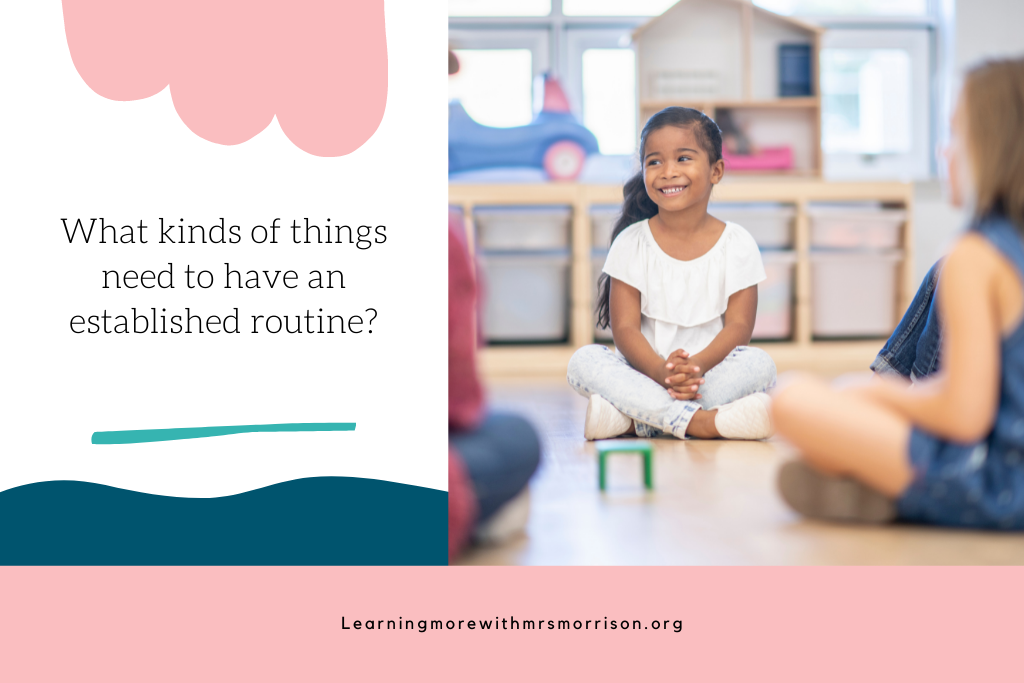
How to teach routines and procedures in the classroom
Before school starts, you will need to plan routines or procedures for EVERYTHING you do in the classroom. Find my list here. Every single thing you do in the classroom should have a routine. Some will be short one or two-step routines, some may have 5-7 steps. Routines shouldn’t have more than 5-7 steps in primary grade classrooms. Try to keep them as simple as possible for the younger students.
Let’s take a look at an example of our morning routine for entering the classroom. Before I figure out the steps, I need to know what I want them to accomplish and where I want them to end up at the end of the routine. I know I want my students to enter the classroom quietly, I want them to unpack their backpacks, and finish up by sitting down at their desks. This may seem like a silly exercise, but get a backpack and go to the classroom door. Act like you’re a student entering in the morning and write down everything you do from the moment you walk into the classroom until you’re seated and ready to go. It may look something like this:
- Walk quietly to my desk.
- Take down my chair.
- Take EVERYTHING out of my backpack and hang my backpack on the back of my chair
- Turn in my folder/homework
- Sit down and fold hands.
Now, do this exercise for all the things you do during the day. Record the steps in as simple of words as you can. When the first day comes along, you will need these notes to teach the students what you expect from them.
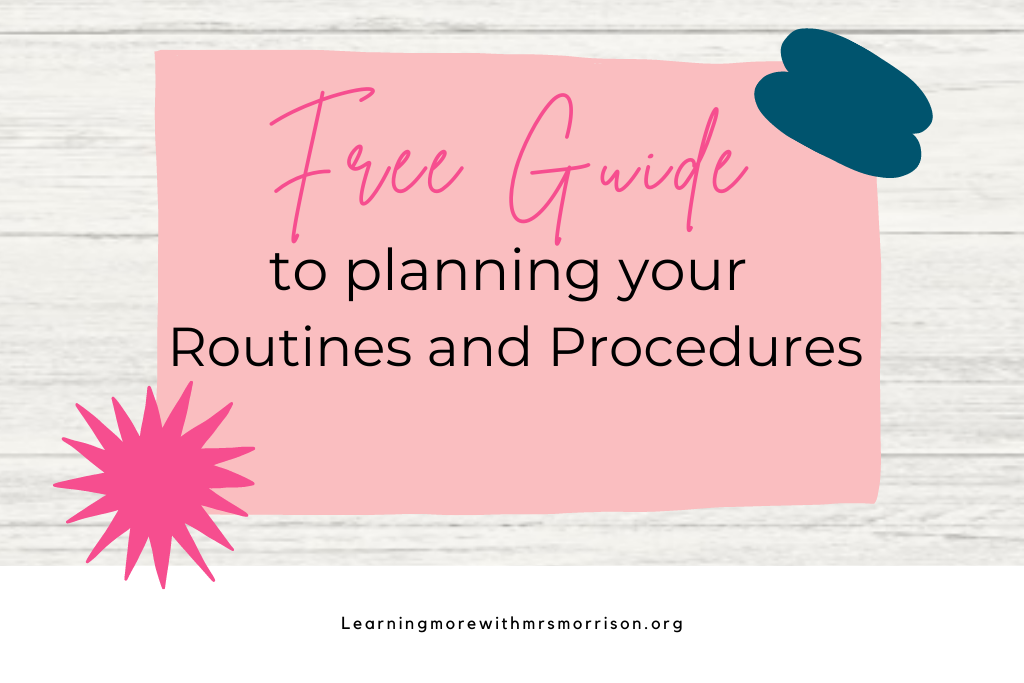
Model-Practice-Model
Using the same example from above, I will use the Model-Practice-Model method of explicitly teaching my students these routines. Again, it will seem like it is taking a lot of time away from teaching, but your classroom will run so smoothly, you won’t regret it.
Here’s how I teach the morning routine for entering the classroom. At the end of the first day of school, I will tell the students that I’m going to teach them what to do in the morning when they get to school. Since the morning routine has 5 steps, I would have the steps listed on a posted or written on the board for them to follow.
Model
I would take a student’s backpack and go through each of the steps with them, modeling exactly what it looks like. As I’m modeling, I would also discuss why I have words like “quietly” in the steps. We discuss that this is not a time that we should be talking to our friends and that we have a job to do. I model walking to my desk. I show them how to take down their chair. We discuss why it’s important to take everything out of their backpack first thing in the morning. I show them where to turn in their folder or homework. Then I walk back to the desk and model sitting down quietly and folding my hands. I will show them two to three times before they get the chance to practice.
Practice
Now that I’ve modeled it at least 2-3 times, I will call on a student to demonstrate the procedure for us. The students watch their classmates closely and we talk about what they’re doing correctly. You may even hear “they forgot to take out their water bottle.”
Next, I call on 4-5 students to demonstrate and practice. Again, we talk about what they’re doing correctly. I usually don’t have to let them know what they’re doing wrong because someone at their table will remind them.
We keep going until everyone has had a chance to practice the routine.
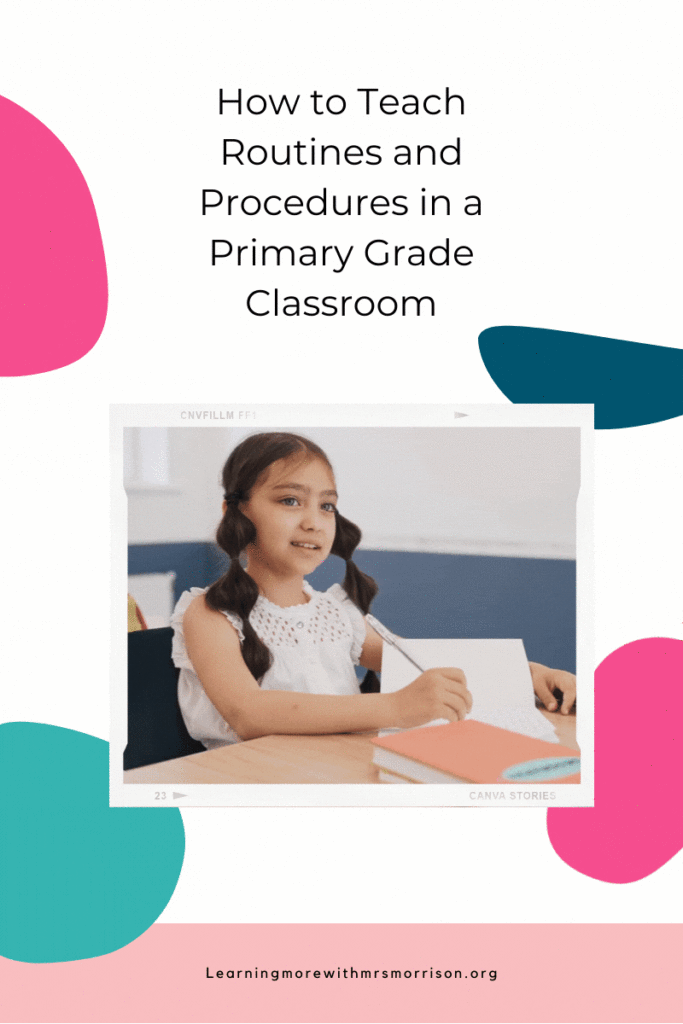
Model
This second part of modeling is one of my favorite parts and the students will love it too. I model two ways of completing the routine and I always model it incorrectly. Yes, you read the right. I model it incorrectly. I run in from the door, shouting and waving hello to a student across the room. I continue to complete the routine incorrectly by forgetting to take everything out of my backpack and not turning in my folder. When I’m done, I ask students what I did wrong. They love to tell me everything I did wrong.
Now, this whole process will take about a half-hour. And the next morning, it’s going to take another half hour. Eventually, they will be able to unpack and sit down in their seats within 5 minutes of the morning bell. I won’t need to remind them to take out and turn in their folders because they will do this automatically.
Again, you will need to do this for every little part of your day. You will need to have routines and procedures established for everything. Check out my list of routines and procedures I teach each year.
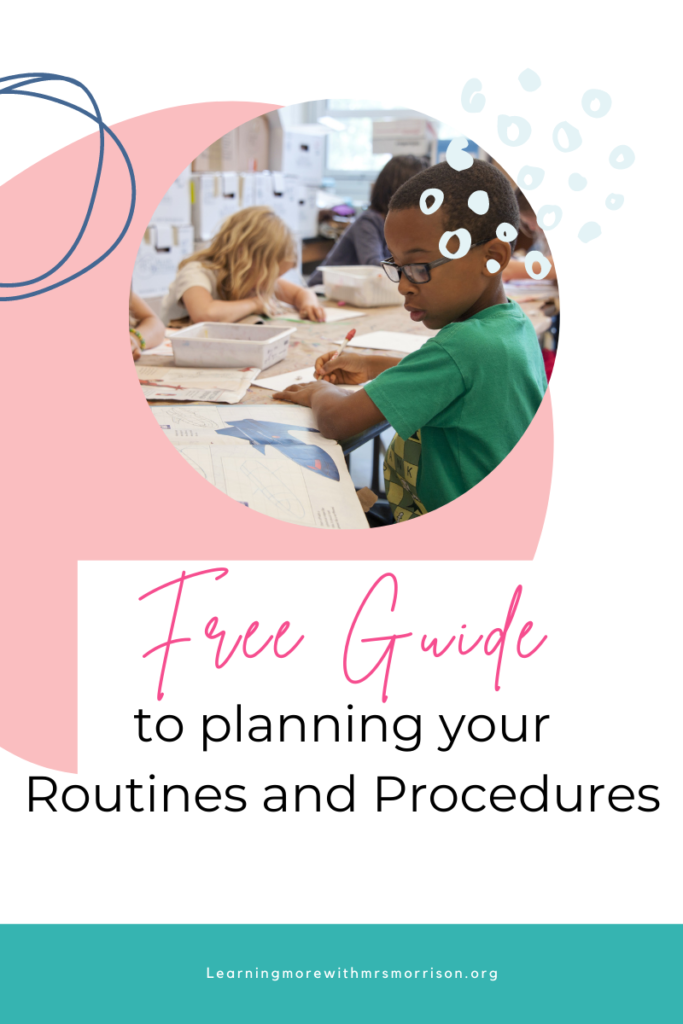
Have you had your first day of school yet? If not, check out the blog about activities for the first day of school
Download your free guide to Classroom Routines and Procedures here.
Looking for some fun activities for the first week back to school? Read my friend Shelly’s post at Smiling and Shining in 2nd Grade for some back-to-school activities.
Have you thought about switching from a paper planner to a digital planner? Read my post 5 Ways Digital Planning will Save You Time and Keep You Organized.

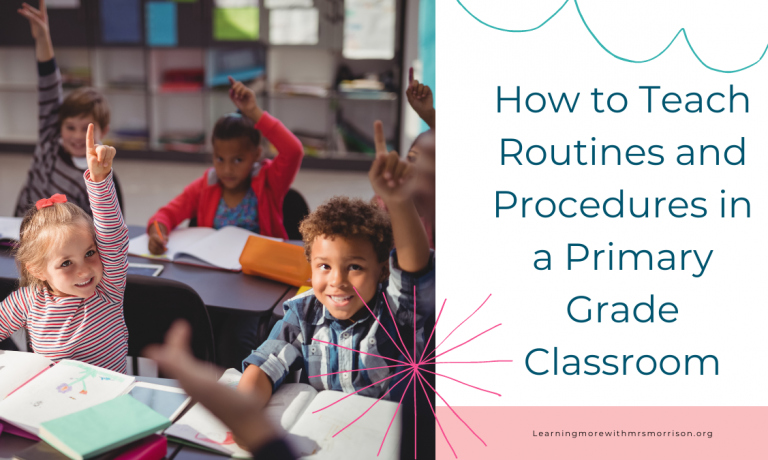

11 Responses
This is so helpful! I am in the middle of writing a blog post about routines and procedures, and I am definitely going to link to this for my readers!
Awesome! Thank you!
I ALWAYS need to brush up on teaching routines and procedures. I loved your ideas in this post and will definitely be using some when back to school time rolls around!
Thank you! I’m so glad it will help. I’ve seen so many people struggle with this.
I think my favorite part of this post was “How much time should you spend…a lot!” It cracked me up but it is so true. I think I spend time every single day of school reviewing procedures it is just that important.
Haha! Yes, it’s so true! That’s what keeps the classroom running like clockwork! Thanks for reading and taking the time to respond. I hope you have a great school year ahead!